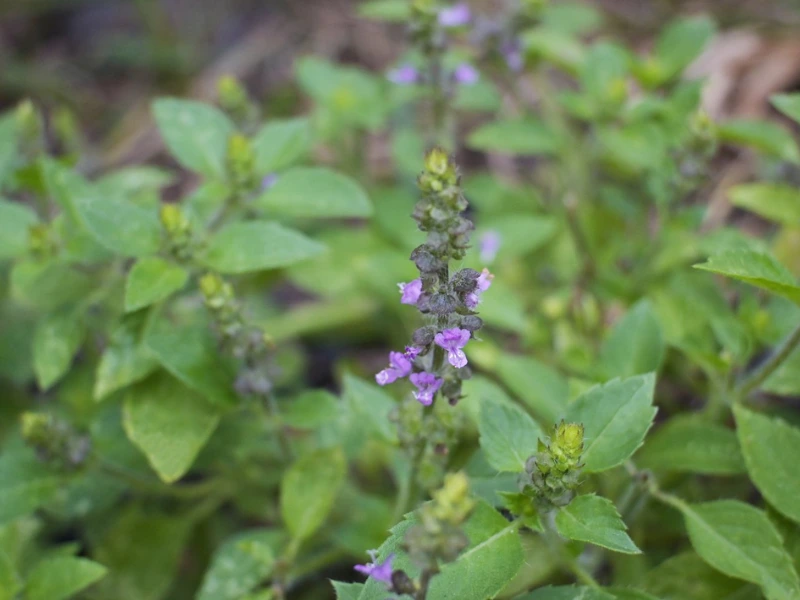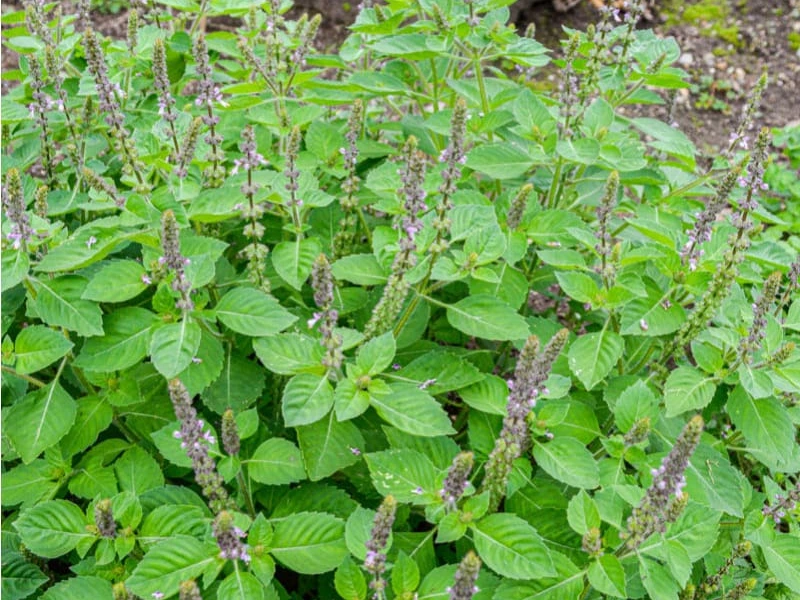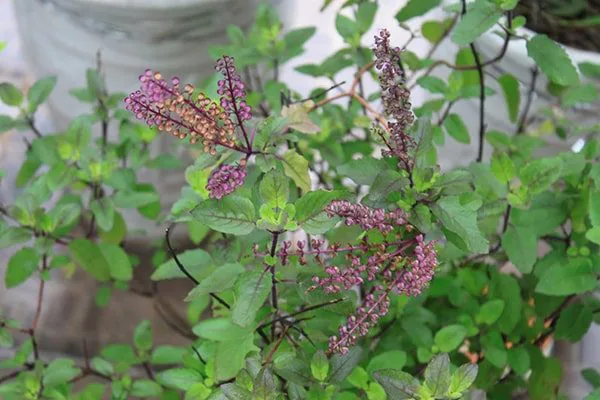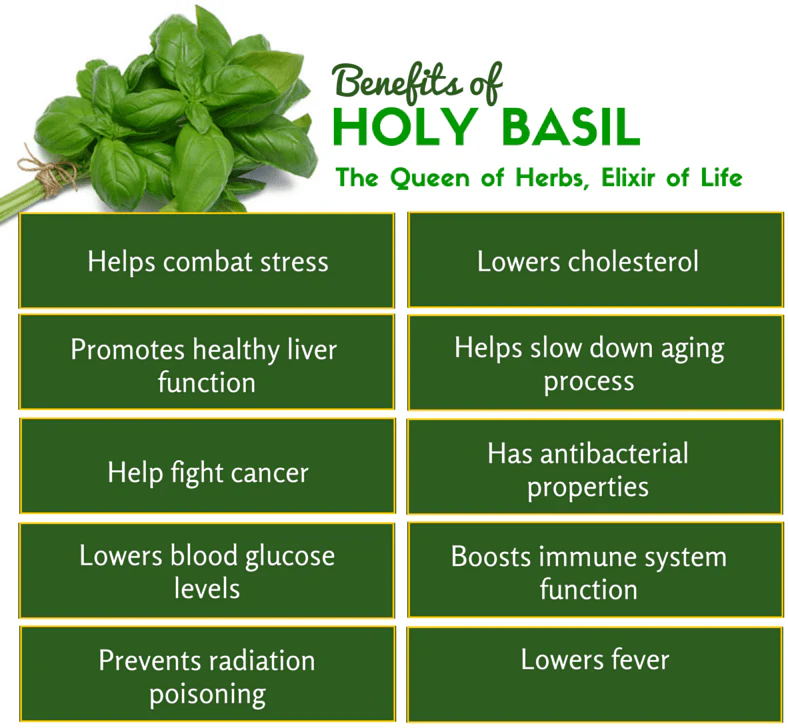Blog
How to Grow and Care for Holy Basil: A Complete Guide
If you’re a gardening enthusiast or someone looking to add a touch of medicinal herbs to your home, you’ve likely considered growing Holy Basil, also known as Tulsi. This sacred herb, commonly used in Ayurvedic medicine, offers numerous health benefits and makes an excellent addition to your garden or kitchen. But how exactly do you grow and care for this remarkable plant? Let’s dive into the essential steps for cultivating Holy Basil, along with tips on how to care for it and enjoy its health-boosting properties.
What is Holy Basil?

Holy Basil, or Tulsi, is an aromatic herb native to the Indian subcontinent, where it holds significant religious and medicinal value. This plant belongs to the Ocimum family and is closely related to the sweet basil you might use in cooking. However, Holy Basil differs not only in appearance but also in its unique health benefits. It is commonly grown for its medicinal properties and is celebrated for promoting stress relief, boosting immunity, and acting as an anti-inflammatory agent.
Unlike regular basil, which has a milder flavor, Holy Basil has a more peppery, spicy taste. This makes it a wonderful addition to various dishes, herbal teas, and even smoothies. Whether you’re growing Holy Basil for culinary uses or its therapeutic qualities, it’s a plant that has earned a special place in many homes and gardens, especially in the U.S.
Read more: Everything You Need to Know About Growing Bocking 14 Comfrey
The History and Cultural Significance of Holy Basil
For centuries, Holy Basil has been revered in Indian culture. It’s often referred to as the “queen of herbs” because of its role in traditional Ayurvedic medicine, where it’s believed to support overall health, balance the body’s energies, and even aid in meditation. It is also an important part of Hindu religious practices, where it is worshipped for its sacred properties.
In recent years, as wellness trends have become more popular, Holy Basil has made its way into Western culture, particularly in the United States. Many people now grow it not just for its medicinal benefits but also for its resilience and unique flavor.
How to Grow Holy Basil

Growing Holy Basil is relatively easy if you follow the right steps. Whether you’re an experienced gardener or a beginner, this herb can thrive in your garden with a little care. Here’s a detailed guide to help you get started.
Choosing the Right Location
The first step to growing a healthy Holy Basil is selecting the right location. This herb loves sunlight, so make sure to plant it in a spot that receives at least 6-8 hours of direct sunlight per day. Holy Basil thrives in warm climates, and if you live in USDA zones 10-11, you’re in luck! However, even if you live in cooler regions, you can still grow this herb indoors, provided it gets enough light.
When planting outside, ensure the soil is well-draining and rich in organic matter. If you’re unsure, you can improve your soil by mixing in compost or well-rotted manure.
Planting Holy Basil
You can start by growing Holy Basil from seeds or by purchasing young plants from a nursery. If you’re starting from seeds, sow them in seed trays about 6-8 weeks before the last frost date. Holy Basil seeds require warmth and light to germinate, so place them in a sunny spot and keep the soil moist but not waterlogged.
Once the seedlings have developed enough leaves, you can transplant them into your garden or into larger pots. If you’re growing them indoors, you can keep them in pots and place them near a south-facing window.
Watering and Feeding Holy Basil
Holy Basil requires regular watering, but be careful not to overwater. The soil should be kept moist, but you don’t want it to become soggy, as this can lead to root rot. The key is to water when the top inch of soil feels dry.
Fertilizing Holy Basil is also important for healthy growth. Organic fertilizers, such as compost or a balanced liquid fertilizer, can be applied every 4-6 weeks during the growing season. This will ensure that your plant has all the nutrients it needs to thrive.
Caring for Holy Basil

Once you’ve planted Holy Basil, it’s important to care for it properly. Here are some tips to help you keep your plant healthy and flourishing.
Pruning and Harvesting
One of the key aspects of Holy Basil care is regular pruning. Pruning encourages the plant to grow more vigorously and develop a bushy shape. Use sharp scissors or pruning shears to cut back the stems, focusing on removing any dead or damaged growth. Be sure to pinch off the flowers once they appear, as this helps the plant conserve energy for producing more leaves.
When it comes to harvesting, Holy Basil leaves can be picked once the plant has reached a reasonable size. Ideally, you should harvest leaves in the morning before the sun gets too hot. This helps preserve the plant’s essential oils and ensures that the leaves are at their most potent.
Dealing with Common Pests and Diseases
Like any plant, Holy Basil can be susceptible to pests and diseases. Some common pests include aphids, whiteflies, and spider mites. These pests can be controlled by spraying the plant with a mixture of water and a mild soap solution or using natural predators like ladybugs.
Additionally, Holy Basil can be prone to fungal infections, especially if the soil is too wet. To prevent this, avoid watering the plant from above and make sure it has proper drainage. If you notice any signs of disease, such as yellowing leaves or wilting, remove the affected parts promptly.
Ensuring Year-Round Growth
If you live in a colder climate, Holy Basil may not survive the winter outdoors. To protect it, you can bring the plant inside before the first frost and continue to care for it indoors. Place it in a sunny spot, and continue to water and prune as needed. Holy Basil can thrive indoors with proper care, so don’t worry about losing it during the colder months.
Health Benefits and Uses of Holy Basil
Holy Basil isn’t just a beautiful plant to have around; it also boasts impressive health benefits. Here are some of the ways this herb can improve your well-being:
Medicinal Benefits of Holy Basil
Holy Basil has been used for centuries in Ayurvedic medicine for its healing properties. Some of its key health benefits include:
-
Stress Relief: Holy Basil is an adaptogen, meaning it helps the body adapt to stress and reduce anxiety levels.
-
Immune System Support: The herb is known for boosting immunity and fighting off infections due to its antimicrobial properties.
-
Anti-inflammatory: Holy Basil can help reduce inflammation in the body, making it useful for conditions like arthritis.
-
Detoxification: Holy Basil aids in detoxifying the body by supporting liver function and promoting healthy digestion.

Culinary Uses
Aside from its medicinal properties, Holy Basil also adds a unique flavor to dishes. You can use its leaves in soups, salads, teas, and smoothies. It pairs well with both savory and sweet recipes, making it an incredibly versatile herb. You can also use it to make Holy Basil tea, which is especially popular for its calming effects.
FAQs about Growing and Caring for Holy Basil
-
How much sunlight does Holy Basil need?
-
Holy Basil needs at least 6-8 hours of direct sunlight each day to grow well. If you’re growing it indoors, place it near a sunny window.
-
-
Can Holy Basil be grown indoors?
-
Yes! Holy Basil can thrive indoors if it receives enough sunlight. It’s an excellent choice for windowsills, especially in colder climates.
-
-
How do I know when my Holy Basil plant is ready for harvest?
-
Your Holy Basil plant is ready to harvest once it has several sets of leaves. It’s best to pick leaves in the morning before the sun gets too hot.
-
-
What are the health benefits of consuming Holy Basil regularly?
-
Consuming Holy Basil regularly can help with stress relief, boosting immunity, and reducing inflammation. It’s also great for detoxification and promoting overall well-being.
-
Conclusion
Growing and caring for Holy Basil is not only a rewarding experience but also a way to enhance your health and well-being. By following the steps outlined in this guide, you’ll be well on your way to growing a thriving Holy Basil plant. Whether you’re using it for its medicinal benefits or culinary uses, this herb is sure to become a staple in your home and garden. So, what are you waiting for? Start growing your own Holy Basil today!

7 Vegetables to Plant in December for a Bountiful Winter Harvest
Winter gardening is a challenge many new gardeners shy away from. But if you’re among [...]
Dec
9 Common Christmas Cactus Problems and How to Fix Them
Have you ever walked past your Christmas cactus and wondered why it suddenly looks sad? [...]
Nov
Swedish Ivy Care: How to Grow a Healthy, Thriving Plant
Have you ever looked at your Swedish Ivy and wondered why the leaves are turning [...]
Nov
Avoid These 10 Garlic Planting Mistakes for Bigger, Healthier Bulbs
Growing garlic at home is one of the most satisfying things a gardener can do [...]
Nov
How to Prevent Christmas Cactus Bud Drop: Tips for a Healthy Bloom
Have you ever noticed your beautiful Christmas cactus (Schlumbergera) starting to lose its buds just [...]
Nov
Discover 7 Stunning Types of Night-Blooming Cereus
Have you ever waited for a flower that only opens at night and then disappears [...]
Nov